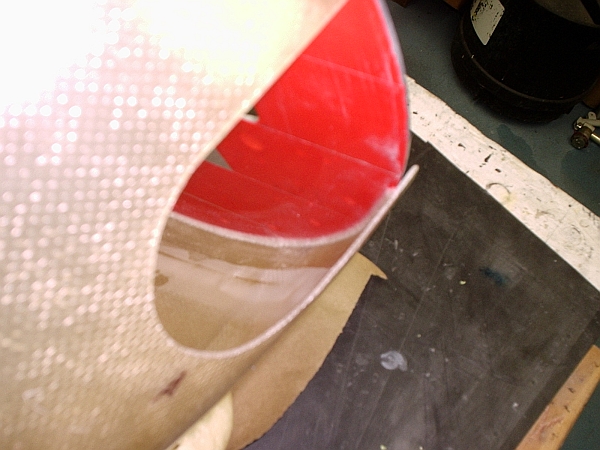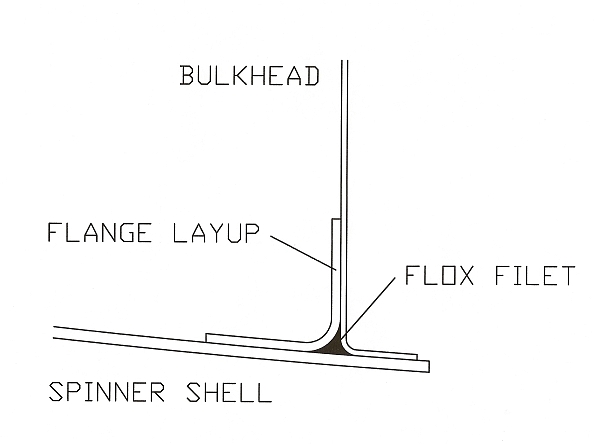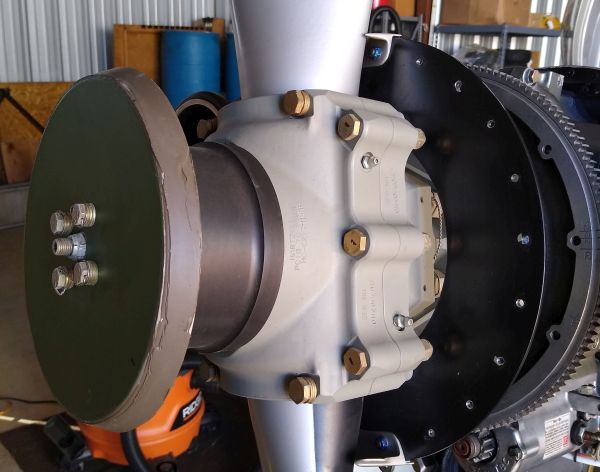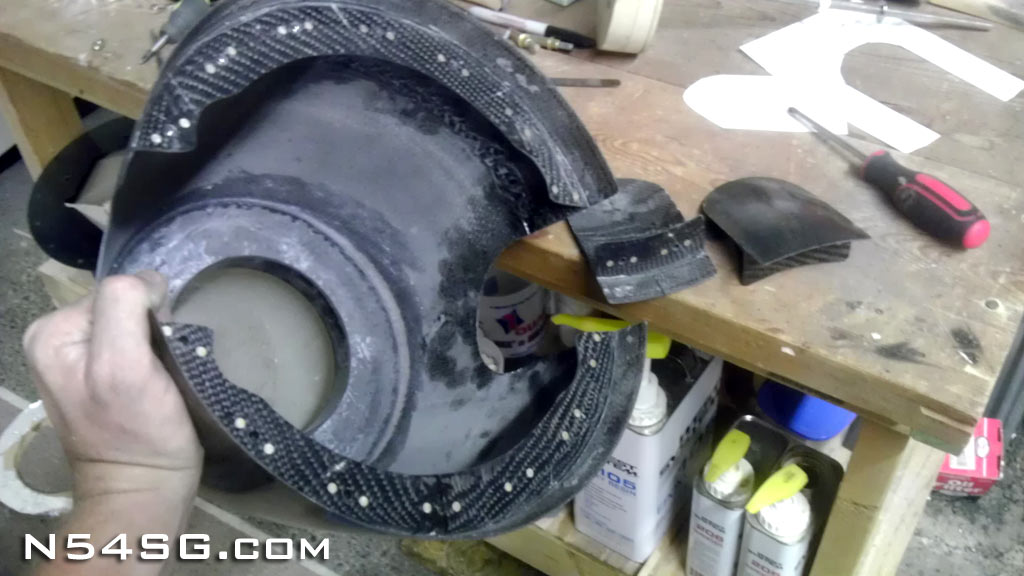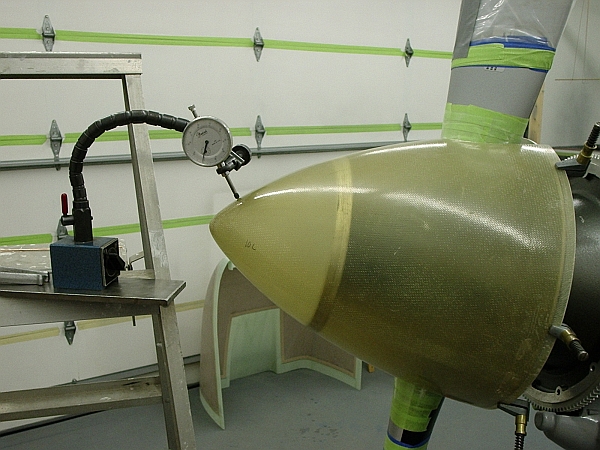Another option
Hey Mickey. Good seeing you at OSH a few months ago.
There is another option to do a screwless spinner. I had to come up with one for an aluminum spinner since that is what I wanted. Dan's and the others look great, but that wasn't possible for an aluminum spinner. This idea will work for a fiberglass spinner too. I personally think this is a better way than the others, but I am bias since this was my idea.

I have not seen this particular way done by anybody else, so maybe there is a reason why? It just comforts me more having aluminum/rivets holding this area together than fiberglass....but that's just me.
****DISCLAIMER: It has worked for me, but don't blindly do this without serious thought. I am not an engineer by trade, but have put a lot of thought and research into this design and chatted with many engineers/people before this was done. As Dan has mentioned (and everybody knows), there is some serious rotation/vibration going on at this location and the consequences of any problems could result in a very bad outcome very quickly. Sorry guys, I feel like this is one of those TV commercials with a drug that says all the bad things that can kill ya). ****
I had to make an adjustment from the smaller front spinner bulkhead fitting that was originally used (as you can see in the picture below), but once the other method (like what Dan used and McCauley Prop uses) was installed, I have had no issues (explained below). The forward/small bulkhead new design before this setup started off as minor, but could have been bad rather quickly.
Here is a picture of the finished product. The only thing you can see are the rivets for the flange of the large bulkhead (better than screws on an aluminum one, at least if you are anal). If you are doing a fiberglass spinner, these can easily be covered with filler, microballons or whatever, and blended in very nicely.
[/IMG]
Basically, I took two large spinner bulkheads and cut them where there was as much overlap as possible (where the screws/nutplates held them together). I used #8 nutplates evenly spaced to hold the two overlapped pieces together and riveted the "ears" on the main bulkhead attached to the prop. To take the spinner off, I take the cowl off and unscrew the 12 screws holding the spinner (with the riveted bulkhead that was trimmed on the inside of the circle that has the nutplates on it). The other bulkhead remains attached to the prob, but is trimmed where the outside flange is taken away. You can see this in the pictures below.
A very big concern was making absolutely sure that everything was symmetrical and equal as far as cutting, trimming etc. My concern was having an imbalance like a tire and having issues with that.
As far as the smaller inner bulkhead on the final product, I used a second one on that too. I Scotchwelded (super strong epoxy yet not quite as hard as JB Weld) just the flange or ring on the inside of the spinner. Then I used the normal small bulkhead so that flange is snug on the inside of the other flange. I Scotchwelded the void spots between the two flanges (with a release agent like packing take on one flange) so it would be a perfect snug fit. Obviously since the diameters are the same, it's not a perfect overlap from the geometry, but very good non-the-less. I'm sure this is not necessary to have the extra flange for protection/beefyness, but I like overdoing just in case.
The last thing to consider was the pressure required to keep the spinner snug on the two bulkheads (front and back) without too much pressure when the screws are tightened. I chatted with the engineers at McCauley to get their spec sheet on a prop/spinner configuration they use that is similar. I made the distance the same (can't quite remember but can look up in my notes), but I think it was 1/8" gap in a normal resting state. Then when I screw the 12 screws in, the gap closes and it's enough pressure to keep the spinner pulled into the small front bulkhead (since there are no screws physically attaching it).
Please disregard the small forward bulkhead in this picture as this is the first version that had to be changed. Picture is to mainly show you the flange on the outer edge of the spinner and how it looks ready to be connected to the prop.
This picture does not have the final mod to the spinner setup. It does not have the smaller forward spinner bulkhead/flange shown like I have now. Just pretend the aluminum cup looking thing on the end is replaced with the bulkhead and you'll have the idea.



